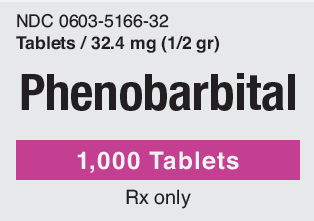6.5 Traditional Systems for Measuring Distance, Weight, and Volume
Three common measurement systems used to be applied in pharmacy—the avoirdupois system, the apothecary system, and the household system. However, because of safety issues, they have been replaced by the more scientific and universal metric system. It is, however, important to know about the other systems and how they relate to the metric system—the official pharmacy measurement system.
The US Systems: Avoirdupois and Imperial Systems
Like languages, measurement systems often evolve by folk processes. For example, a foot as a measurement was originally equal to the length of an average man’s foot. It grew out of traditions in France and is known as the avoirdupois system. This system, still used in the United States, has 12 inches to 1 foot and 3 feet to 1 yard. The changing set of proportions from 12 to 1, then to 3 to 1 makes it difficult to convert different measurements as they go up or down in amount. The British used part of the avoirdupois system along with nautical miles, fluid ounces, drams, pints, quarts, and gallons, plus grains, pounds, stones, and tons. They called their combined system the imperial system (or the British imperial system). This system, for the most part, was used in the pharmacies of the American colonies but is no longer used.
 Safety Alert
Safety Alert
Grain and gram can be easily mixed up, resulting in medication errors. So be careful with medication orders with these abbreviations! Metric should be used instead of alternates.
The Apothecary System
Another system the British imperial and American systems used was the apothecary system. One of the oldest systems of measurement, it is based on the Roman systems of weights. Stones, seeds, and grains were used as reference points for the weights; filled gourds and other containers were utilized for volume (evolving into grains, pounds, and ounces). The system also included the fluid dram (approximately equivalent to 3.75 mL) and the scruple (roughly equivalent to 1.3 g). The apothecary system has been generally replaced by the metric system.
One unit in the apothecary system still sometimes used in pharmacy is the grain (gr), a dry weight measure. A common example can be seen in aspirin and acetaminophen products, which are sometimes labeled as 5 gr, an amount approximately equivalent to 325 mg (since 1 gr = 65 mg).
To confuse matters, 1 gr could also be equal to 60 mg (as in codeine) and 64.8 mg (as in phenobarbital). Often the differences depend on whether the drug is synthetic, is semisynthetic, or comes from a natural source. Some drug stock labels will reflect both units of measurement (see phenobarbital to the left). Because of such confusion, the grain is not a safe measurement to use.
Other units of measurement established by the apothecary system include the pint, quart, gallon, ounce, and pound—all of which have survived over the centuries (with changes to their equivalencies). However, with very few exceptions, these measurements are not used in general pharmacy practice today and can also lead to medication errors if put into practice. (See Table 6.9 in the conversion section to see how some of these measurements compare to the metric system.)

Because the size of a grain can vary from drug to drug, avoid using it in measurements.
The Household System
The household system of measurement is based on the apothecary system and was established to help patients take their medications at home: the drop, teaspoon, tablespoon, and cup. Like the apothecary and avoirdupois systems, this system includes the quart, ounce, and pound but also several liquid units (see Table 6.5). As some OTC medications still use the household system of teaspoons and tablespoons for dosages, it’s important to be aware before dispensing if a medication is using the household system or the more common metric system. (See Table 6.8 later in this chapter for an overview of the metric measurements.)
Table 6.5 Common Household English (US) Measurements
Weights |
Liquid Volumes |
|---|---|
1 pound = 16 ounces |
1 gallon = 4 quarts 1 quart = 2 pints 1 pint = 2 cups 1 cup = 8 fluid ounces 1 tablespoon = 3 teaspoons 2 tablespoons = 1 fluid ounce |
 IN THE REAL WORLD
IN THE REAL WORLD
For years, most dosing cups listed fluid ounces on one side and drams on the other. Numerous errors occurred as nurses assumed that the dram measurement lines were for milliliters, because the writing on the cups was difficult to read. In one case reported to the National Medication Errors Reporting System, the nurse offered a hospice patient 1 fluid dram of a 100 mg/5 mL morphine sulfate medication instead of the 1 mL in the prescription. The dose was more than three-and-a-half times the correct amount. In another case, a nurse gave 5 fluid drams of a 100 mg/1 mL solution of acetaminophen, thinking that it was 5 mL or 500 mg. The dose turned out to be 18.45 mL, or 1,845 g, almost four times the correct amount!
Because of errors like these, in June 2015 a call for the elimination of all dosage cups with drams and a complete use of the metric system was requested from numerous health and pharmacy organizations—including the Institute for Safe Medication Practices, American Academy of Pediatrics, American Society of Health-System Pharmacists, Centers for Disease Control and Prevention, Consumer Healthcare Products Association, American Pharmacists Association, US Pharmacopeial Convention, and National Council for Prescription Drug Programs.